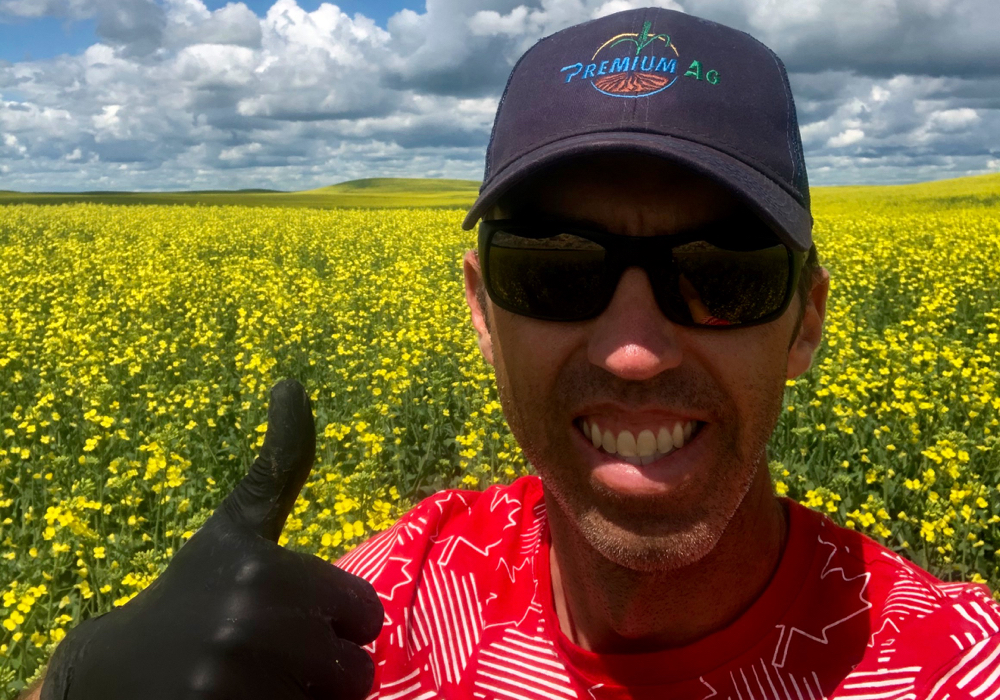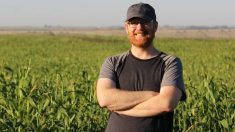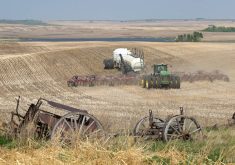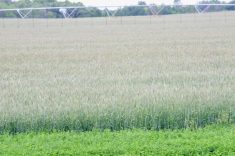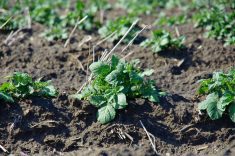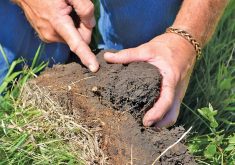When you talk to Matt Gosling about soil — even if it’s over the phone — you can picture his eyes getting wider as his voice becomes more animated.
He considers soil the cornerstone of crop agriculture: A living organism that is constantly shifting, changing and moving.
By that logic, then, soil testing must be a cornerstone practice and in Gosling’s view, the commonly recommended two-foot soil testing threshold isn’t always enough, especially for irrigated and manured fields.
“We’ve debated for the past many years whether we’re testing deep enough. It’s a well-known fact that some roots go well past two feet,” said Gosling, co-founder of Strathmore-based Premium Ag.
Read Also

Farming Smarter receives financial boost from Alberta government for potato research
Farming Smarter near Lethbridge got a boost to its research equipment, thanks to the Alberta government’s increase in funding for research associations.
“My fall rye crop — grown in sandy loam soil under irrigation — had measured water uptake at 100 centimetres (3.3 feet) (according to a) Crop Intelligence moisture probe. So we’re potentially missing 30 to 50 centimetres’ worth of nutrition, mostly mobile nutrients like nitrogen, sulphur, chloride and boron.”
More alarming is that many producers are not soil testing at all, he said.
“When I started soil testing, the statistic I remember was 10 per cent of farms did soil testing. That number has increased in the past 17 years to — and I’m guessing here — 30 to 60 per cent of farmers. Fertilizer is one of the biggest costs on the farm and they’re guessing.”
Although the soil testing process seems fairly basic, it’s more complex than many think. Most producers know they should avoid testing on marginal, unrepresentative land, but that requires a knowledge of the land a hired technician might not have.
Bottom line, said Gosling, is make sure whomever you hire knows the ins and outs of your fields beforehand.
“There’s a lot to know about taking a proper soil test, such as not testing on the edge of two zones and not doing it in an area that is prone to compaction or overlap. Topography and slope influence water movement, organic matter, pH and yield potential.”
Most producers who soil test do so in spring before fertilizer application. However, there is a growing consensus among agronomists, Gosling included, that fall testing can offer just as much insight.
“Starting in September right up until freeze-up we typically get 95 per cent of (clients’) soil testing done,” he said. “And then all winter we do a very thorough crop plan for each individual field based on those soil tests.”
Management zones pay off
Defining management zones (areas within a field with similar yield potential) has become a highly recommended practice — not just for managing soil nutrients, but virtually all facets of crop production. Gosling is a big fan of this approach. He likens it to his 4-H days when he took extensive records on every calf born in a 30- to 35-head Limousin purebred herd. It was a lot of hard work but the data often paid off, he said.
“In my mind, the big opportunity for farms to do better is to understand their cost of production on a field-by-field or better yet, zone-by-zone basis. If this zone in this field is continually losing me money, why are we pounding our heads against the wall?”
Building a knowledge base of soil nutrients isn’t quick, but the benefits keep building over time.
“The first three or four years working with a grower is not nearly as exhilarating as it is in the years past that. We have clients who are 17 years into our program and the datasets on those particular fields are phenomenal. Essentially, the more historical data you have, the better.”
Gosling said soil is like a piggy bank and nutrients are the coins inside it — but soil testing is needed to know what you have.
“A 20-pound bank account of sulphur is only roughly going to be good for 40 to 45 bushels per acre of canola,” he said. “Our yield expectations on canola are often 55 to 65 bushels per acre. On some of our irrigated land it’s 80 or 85 bushels per acre. That is not going to be achievable unless we top up that piggy bank with sulphur.”
But the accounting analogy only goes so far.
“The general assumption out there is that if we fertilize for a 40-bushel crop and we harvested 20, there should be 20 bushels left of crop in the soil. That is not often the case. Soils react very differently and I do very much believe we have to do our best to replace what we take as a nutritional philosophy.
“But I am also at the same time hopeful that we can do better by our soil in making it release more of those nutrients that are tied up in the piggy bank.”
Don’t underestimate P
One nutrient that really needs to be topped up across the Prairies is phosphorus, he said.
Calling it his “career nutrient,” Gosling said P is frequently considered the runt of the litter among nutrients because its benefits tend to be long term, which also makes it the first to get cut when margins are thin.
“I have always compared phosphorus to a crappy GIC investment: The interest is very low and it’s very slow to react — it’s a very long-term strategy. The simple math is a bushel of canola equals a pound of phosphorus, but I don’t know many canola growers who are applying 60 to 65 pounds of phosphorus per acre.”
But the indications are that most aren’t, he said.
“The writing is on the wall that phosphorus is the most limited nutrient long term in our crystal ball. So what are you going to do about it? Are you going to keep up putting down 30 pounds and continually removing 50?”
Gosling’s focus on macronutrients such as nitrogen, sulphur and phosphorus underscores a greater philosophy.
“This is just my opinion — agronomists have lots of them — but there’s no use talking about micronutrients (such as copper, manganese, zinc and iron) until you have your macronutrients figured out,” he said. “And I can almost argue that we should tackle other issues like drainage and pH before we tackle micronutrients unless there’s a severe deficiency.”


